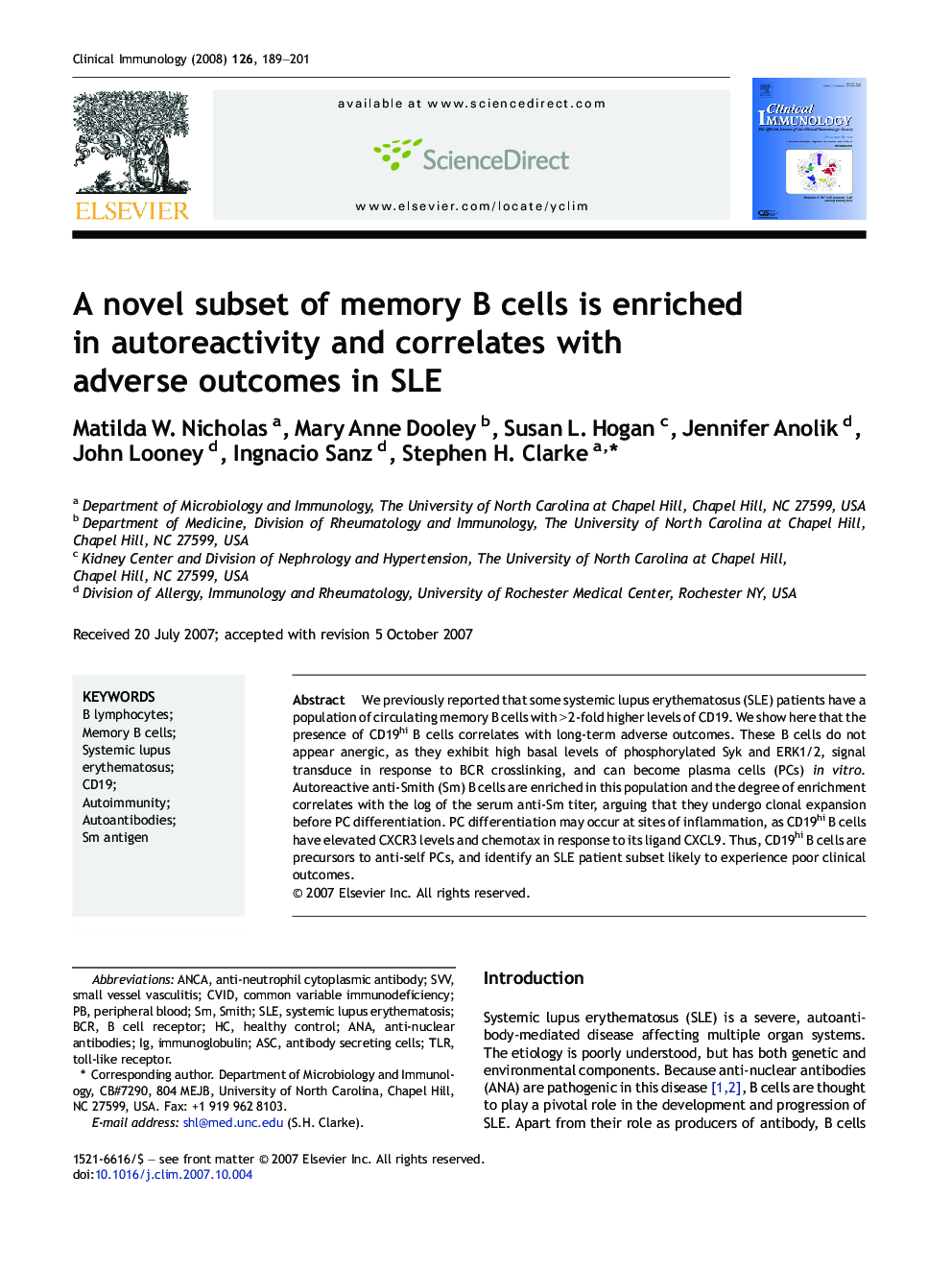| Article ID | Journal | Published Year | Pages | File Type |
|---|---|---|---|---|
| 3258406 | Clinical Immunology | 2008 | 13 Pages |
We previously reported that some systemic lupus erythematosus (SLE) patients have a population of circulating memory B cells with > 2-fold higher levels of CD19. We show here that the presence of CD19hi B cells correlates with long-term adverse outcomes. These B cells do not appear anergic, as they exhibit high basal levels of phosphorylated Syk and ERK1/2, signal transduce in response to BCR crosslinking, and can become plasma cells (PCs) in vitro. Autoreactive anti-Smith (Sm) B cells are enriched in this population and the degree of enrichment correlates with the log of the serum anti-Sm titer, arguing that they undergo clonal expansion before PC differentiation. PC differentiation may occur at sites of inflammation, as CD19hi B cells have elevated CXCR3 levels and chemotax in response to its ligand CXCL9. Thus, CD19hi B cells are precursors to anti-self PCs, and identify an SLE patient subset likely to experience poor clinical outcomes.
